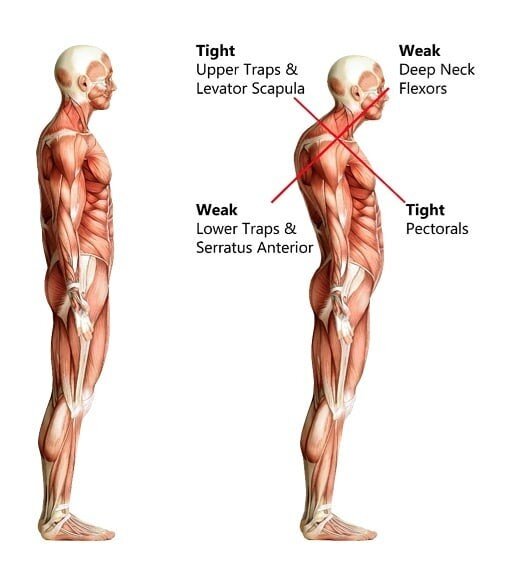The shoulder is made up of four joints. 1. Acromial-clavicular (AC), 2. Sternoclavicular (SC), 3. Glenohumeral (GH), 4. Scapulothoracic. The traditional main muscles of the shoulder include the SITS muscles or Supraspinatous, Infraspinatous, Teres Minor and Subscapularis. You can see where these muscles attach and their function based on the included image:
Poor posture usually due to poor working mechanics with desk jobs as well as this not so new world of looking down at cell phones can lead to what we call forward head carriage and then upper cross syndrome. The following image shows how upper cross syndrome can affect you.
Shoulder injuries are incredibly common in sport. Some include, but are certainly not limited to: Softball/Baseball (tendonitis, rotator cuff, SLAP tears), Hockey (shoulder separation & dislocation, clavicle fracture), Tennis (shoulder impingement, rotator cuff tendonitis, shoulder bursitis, sprains and/or strains), Volleyball (shoulder impingement and labral tears).
If shoulder injuries are so common in sport, how and what should we do to protect ourselves or our athletes and keep them performing at their best. First we need to begin with understanding the mobility stability continuum. Basically this is that every other joint is either needed for mobility or stability. Yes, there are specific areas throughout your body that you DO NOT want to be “mobile” but rather you want them to be stable in order to support the mobile areas.




